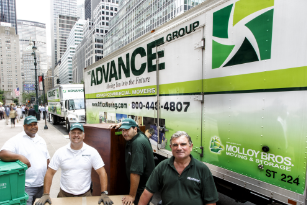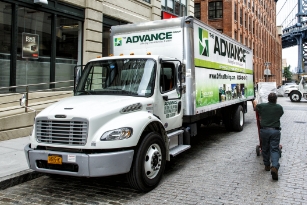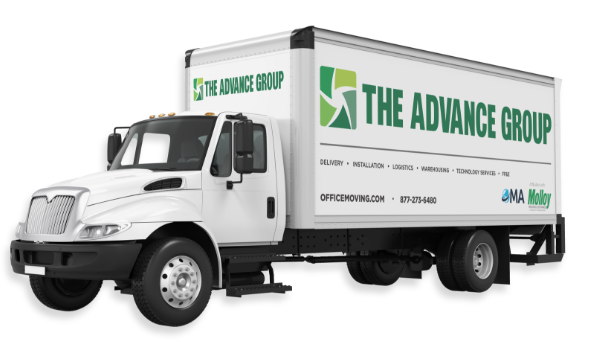Effectively Announcing Your Business Move to Stakeholders

A successful business relocation extends far beyond the physical logistics of moving equipment and furniture. How you communicate your move to various stakeholders can significantly impact customer retention, employee morale, vendor relationships, and overall business continuity. A well-orchestrated communication strategy ensures that everyone affected by your relocation remains informed, engaged, and supportive throughout the transition process.
Developing Your Communication Timeline
The foundation of effective relocation communication lies in carefully timed communication. Different stakeholder groups require different lead times and levels of detail. Start by creating a comprehensive timeline that maps out when each audience should be notified and what information they need at each stage.
Initiate internal communications with key leadership and department heads at least six months before the planned move. This gives them time to prepare their teams and address operational considerations. Employee communications should follow shortly after, providing enough time for personal planning while maintaining momentum and excitement about the change. External communications to customers, vendors, and partners typically begin 60-90 days before the move, striking a balance between providing adequate notice and minimizing the risk of outdated information.
Tailoring Messages for Different Audiences
Each stakeholder group has unique concerns and interests regarding your business relocation. Employees want to know how the move will affect their daily commute, workspace, and job responsibilities. Customers care about service continuity and how to reach your business during and after the transition. Vendors need logistics information about deliveries and access during the moving period.
Develop specific messaging frameworks for each audience that address their primary concerns while maintaining consistent core information about timing, location, and benefits. This targeted approach demonstrates that you understand and value each group’s relationship with your business, increasing their support for the relocation.
Choosing the Right Communication Channels
Modern businesses have numerous communication options, and the most effective relocation announcements use multiple channels strategically. Email remains essential for detailed information that stakeholders can reference repeatedly. Company websites and intranets provide centralized hubs for updates and frequently asked questions.
Social media platforms offer opportunities for real-time updates and visual content that builds excitement about the new location. Direct mail can be particularly effective for reaching customers who may not regularly check digital communications. Face-to-face meetings, whether in-person or virtual, enable immediate feedback and underscore the personal significance of stakeholder relationships.
Creating Compelling Content
Successful relocation announcements go beyond basic facts to tell the story of why you’re moving and what benefits the new location will provide. Share the vision behind the relocation, whether it’s expansion, improved facilities, better customer access, or enhanced operational efficiency. Utilize visual content, such as architectural renderings, location maps, and progress photos, to help stakeholders envision the new space.
Address practical concerns proactively by including detailed information about new addresses, phone numbers, parking arrangements, and public transportation access. Create comparison charts showing before-and-after improvements to help stakeholders understand the advantages of the new location.
Managing Employee Communications
Employee communication deserves special attention because your team’s enthusiasm and confidence directly impact customer perceptions and business operations. Start with transparent explanations of the relocation rationale, emphasizing how the move supports company growth and creates new opportunities.
Provide detailed information about the new workplace, including amenities, technology upgrades, and environmental improvements. Address practical concerns such as commuting options, parking availability, and nearby dining choices. Consider organizing site visits or virtual tours to help employees familiarize themselves with the new location before the actual move.
Customer Retention Strategies
Customer communications should emphasize continuity and improvement rather than disruption. Highlight how the new location will enable better service, expanded capabilities, or improved accessibility. Provide clear information about service availability during the transition period, as well as any temporary changes to normal operations.
Consider offering special promotions or incentives to encourage customers to update their records and maintain engagement during the transition. Create detailed contact information updates and consider sending multiple reminder communications to ensure customers have the most current information.
Vendor and Partner Coordination
Business relocations require extensive coordination with vendors, suppliers, and service partners. Early communication with these stakeholders helps ensure smooth operations and may reveal opportunities for improved logistics or service arrangements at the new location.
Provide vendors with detailed information about delivery procedures, access requirements, and any changes to ordering or payment processes. Consider scheduling meetings with key partners to discuss how the relocation might affect ongoing relationships and identify opportunities for enhanced collaboration.
Crisis Communication Preparedness
Even well-planned relocations can encounter unexpected challenges that require rapid communication responses. Develop contingency communication plans that address common scenarios such as moving delays, utility connection issues, or temporary service disruptions.
Designate specific team members as the primary points of contact for different stakeholder groups and ensure they have the necessary authority and information to provide timely updates. Pre-draft template messages for various scenarios to enable quick response when issues arise.
Post-Move Follow-Up
Communication responsibilities don’t end when the physical move is complete. Follow up with all stakeholder groups to confirm they have updated contact information, address any ongoing concerns, and gather feedback about the communication process itself.
Share success stories and positive outcomes from the relocation to reinforce the benefits of the move and demonstrate that the change was worthwhile. This follow-up communication helps cement stakeholder confidence and builds momentum for future business initiatives.
Your Success Story Starts Here
Effective communication transforms business relocations from potentially disruptive events into opportunities for stakeholder engagement and relationship strengthening. By developing comprehensive communication strategies that address each audience’s unique needs and concerns, businesses can maintain continuity, preserve relationships, and even enhance their market position through well-managed relocations. The investment in thoughtful communication pays dividends in customer retention, employee satisfaction, and overall business success.
Planning a business relocation and want expert support with both logistics and communication strategies? Contact our experienced team to ensure your move creates positive momentum for your business’s future growth.








